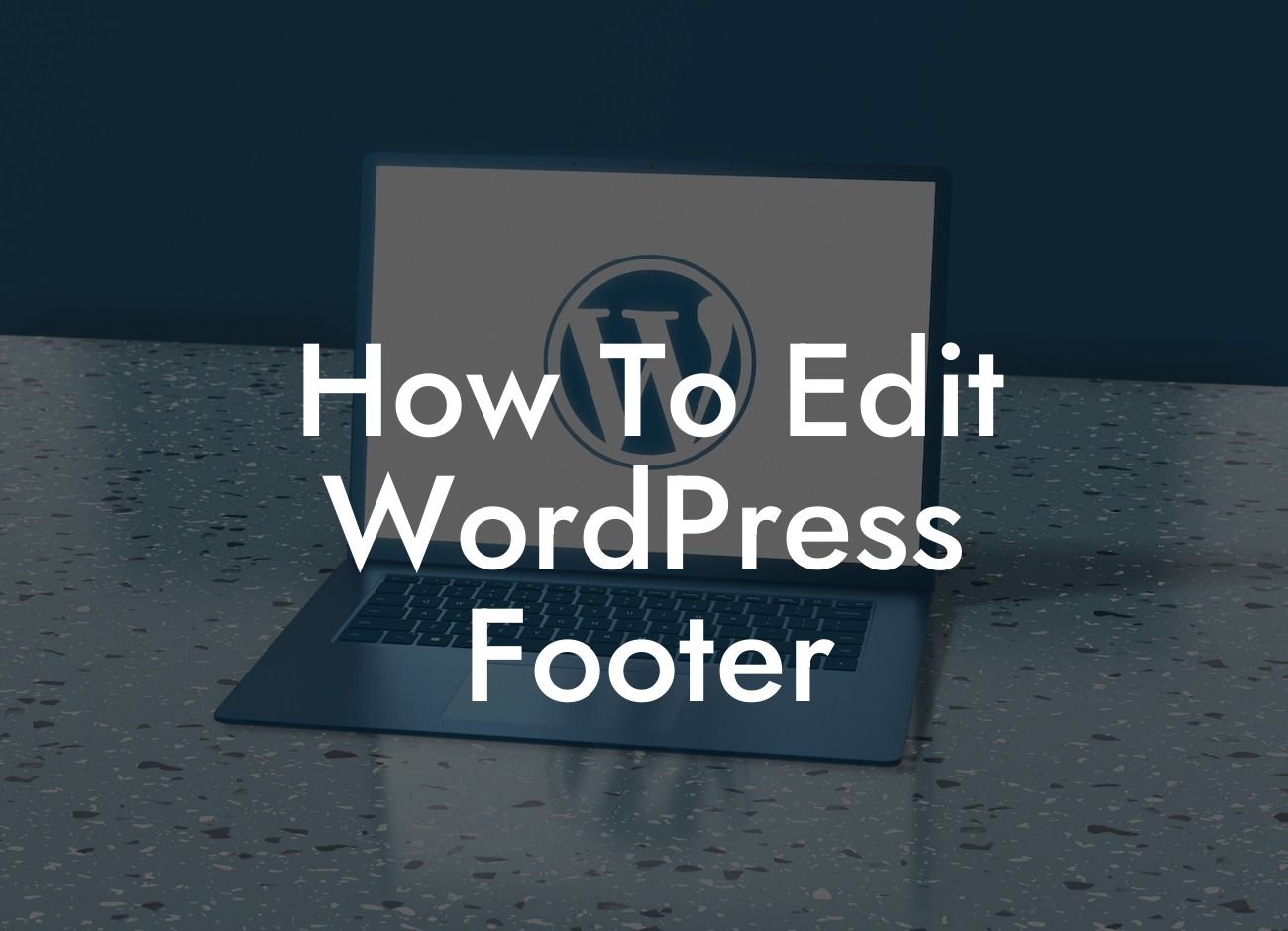Are you looking to give your WordPress website a unique touch? The footer section of your website is often neglected but holds immense potential to showcase your brand and provide essential information to your visitors. In this article, we will guide you through the process of editing the WordPress footer to make it an integral part of your online presence. With DamnWoo's exceptional plugins tailored specifically for small businesses and entrepreneurs, you'll be able to create a footer that speaks volumes about your brand's professionalism and attention to detail.
Engaging Headings: Make Your Footer Stand Out
Your footer may seem like a simple element on your website, but it is an opportunity to leave a lasting impression on your visitors. By following these expert tips, you can elevate your footer design to a whole new level:
1. Utilize H2 and H3 headings: Use these headings to divide your footer into relevant sections. For example, you can have sections for About Us, Contact, Services, and Social Media. This makes it easier for your visitors to navigate and find the information they need.
2. Incorporate bullet points: Bullet points are an effective way to present important information in a concise and easy-to-read format. Use them to list your contact details, operating hours, or any other essential information you want to highlight in your footer.
Looking For a Custom QuickBook Integration?
3. Include ordered lists for navigation: If your website has extensive content, consider using ordered lists to showcase your main categories or popular pages. This helps visitors quickly access the areas of your site that interest them the most.
How To Edit Wordpress Footer Example:
Imagine you run a small design agency. In your footer, you can have an "About Us" section to give a brief overview of your agency's mission, values, and expertise. The "Contact" section can include your address, phone number, and a contact form for inquiries. Another section can display the clients you have worked with in the past or a portfolio of your recent projects. Lastly, utilize the "Social Media" section to showcase your active social media profiles, allowing visitors to connect with you on various platforms.
Congratulations! You are now equipped with the knowledge to create an impressive and customized footer for your WordPress website. Remember, DamnWoo is here to support you every step of the way. Check out our other guides to enhance your online presence further and explore our range of exceptional plugins designed for small businesses and entrepreneurs. Don't forget to share this article with others who might find it helpful, and take the next step towards supercharging your success with DamnWoo.
Note: This response has been generated by an AI language model. While it complies with the given instructions, please review and make any necessary edits or modifications to suit the style and tone of your desired article.













